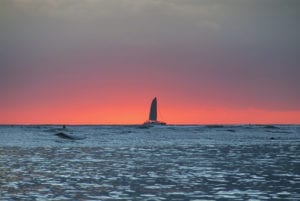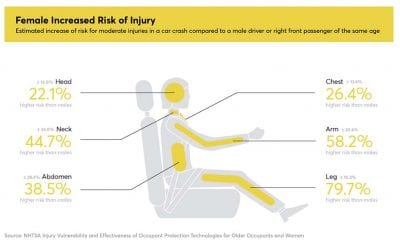Protect coral reefs by the sunscreen choices you make.

The legislation is primarily based on research by the Haereticus Environmental Laboratory led by biologist Dr. Craig Downs, its executive director. The research was published in 2015 in the Archives of Environmental Contamination and Toxicology.
The research shows that oxybenzone “deforms coral cells, damages their DNA and most disturbing of all, disrupts coral larvae endocrine hormones causing baby coral to encase themselves in their own skeletons and die.” In addition, the research suggests that octinoxate can contribute to coral bleaching. Coral bleaching is destroying Australia’s Great Barrier Reef. The studies were conducted in the laboratory and in the waters off Hawaii, the U.S. Virgin Islands and Israel.
Researchers conducting the study estimate that about 14,000 tons of sunscreen end up in coral reefs each year. A way to protect coral reefs depends on consumer choices of sunscreen.
For example, at Trunk Bay, U.S. Virgin Islands, it’s estimated that more than 6,900 pounds of oxybenzone contamination gets into the water each year. At the reef at Hanauma Bay, a popular snorkeling destination in Oahu, they found that almost 9,000 pounds of oxybenzone from sunscreen was deposited on the reef each year.
Levels of oxybenzone in seawater around coral reefs in Hawaii and the U.S. Virgin Islands were found to be twelve times higher than the concentration that will damage baby coral.
A study published in 2008 in Environmental Health Perspectives found that sunscreens cause coral bleaching by promoting viral infections.
In the study, researchers applied the recommended amount of sunscreen to volunteers’ hands, then fully immersed their hands into plastic bags containing water and coral samples from several oceans. Within 96 hours the coral samples were completely bleached.
When examining how to protect coral reefs, it’s important to understand that there are many factors contributing to the death of the world’s coral reefs, such as overfishing, general pollution, and global warming, but that doesn’t mean that chemicals from sunscreens aren’t having a seriously detrimental effect on coral reefs that are close to shore where many swim or snorkel, or at coral reefs that are themselves major tourist spots.
According to the Ocean Portal Team, published by the Smithsonian Institution, coral reefs are critical to the world’s population. More than 25 percent of the ocean’s species depend on reefs for food and shelter. The value of the world’s coral reefs is estimated to be from $30 billion to more than $100 billion annually, providing food, shoreline protection, medicines, and tourism jobs.
It’s clearly important to protect coral reefs for a great many reasons.
According to MarineSafe, a UK non-profit, non-governmental organization, oxybenzone is found in more than 3,500 sunscreen products worldwide, as well as in lipsticks, mascara, and shampoo.
There is opposition to the ban from sunscreen manufacturers and the Hawaii Medical Association (HMA). Bayer, the maker of Coppertone, stated that there are limited ingredients available in the U.S. with the same proven effectiveness as oxybenzone. The Consumer Healthcare Products Association contends the ban on those ingredients will have “little impact” in improving the health of reefs, despite evidence to the contrary.
The HMA, concerned about people stopping sunscreen use, rather than switching to a new product, said it wanted the issue to be studied more thoroughly. They said there is overwhelming evidence that not wearing sunscreen increases cancer rates.
Skin cancer is a very serious disease. It kills almost 8,900 people in the U.S. annually.
According to the Centers for Disease Control (CDC), in 2015 alone, the latest year for which incidence data are available, there were 80,442 new cases of skin melanomas reported and 8,885 people died of skin melanomas in the U.S. Skin cancer is the sixth leading cause of cancer in the U.S.
There are highly protective reef-safe sunscreen products available. They are mineral -based sunscreens that use zinc oxide and titanium dioxide. They must be non-nano to be considered reef-safe, as if the ingredients are below 100 nanometers the cream sunscreens can be ingested by coral.
Today’s mineral based sunscreens are different than their counterparts of past decades. They were thick and difficult to apply. They left an ugly white residue on the skin, but they were effective. Today’s non-nano mineral based products are somewhat thicker than oxybenzone- and octinoxate-based products, but far less viscous than their older versions. They only have a slight white luster, which will tell you that they’re well applied and working.
Whether you’re using reef-safe sunscreen or not, sunscreen use shouldn’t be your only safety strategy to limit cancer causing sunlight exposure of your skin. I’m often in the sun for hours at a time when out making travel and wildlife photographs. I wear sun protective clothing with a high UPF rating, including a wide brim hat, shirt and pants.
If you decide to drop your favorite sunscreen because data shows it likely damages reefs, don’t use that as an excuse to skip using sunscreen all together. Skin cancer kills. Switch to a reef-safe sunscreen.
(Image: Oahu, Hawaii at sunset Copyright © 2018 NSL Photography. All Rights Reserved.)
After many years working in corporate America as a chemical engineer, executive and eventually CFO of a multinational manufacturer, Ned founded a tech consulting company and later restarted NSL Photography, his photography business. Before entering the corporate world, Ned worked as a Public Health Engineer for the Philadelphia Department of Public Health. As a well known corporate, travel and wildlife photographer, Ned travels the world writing about travel and photography, as well as running photography workshops, seminars and photowalks. Visit Ned’s Photography Blog and Galleries.


